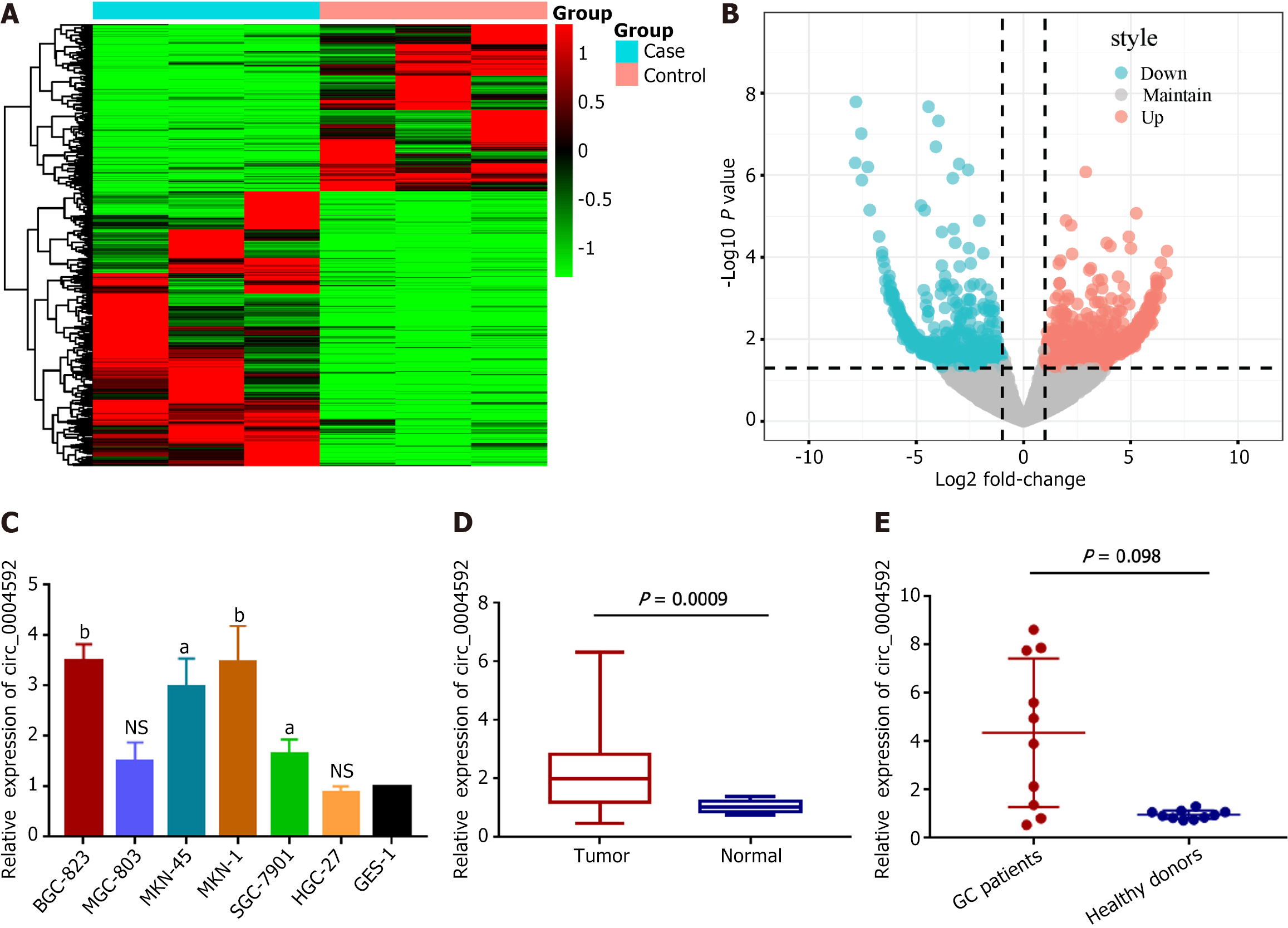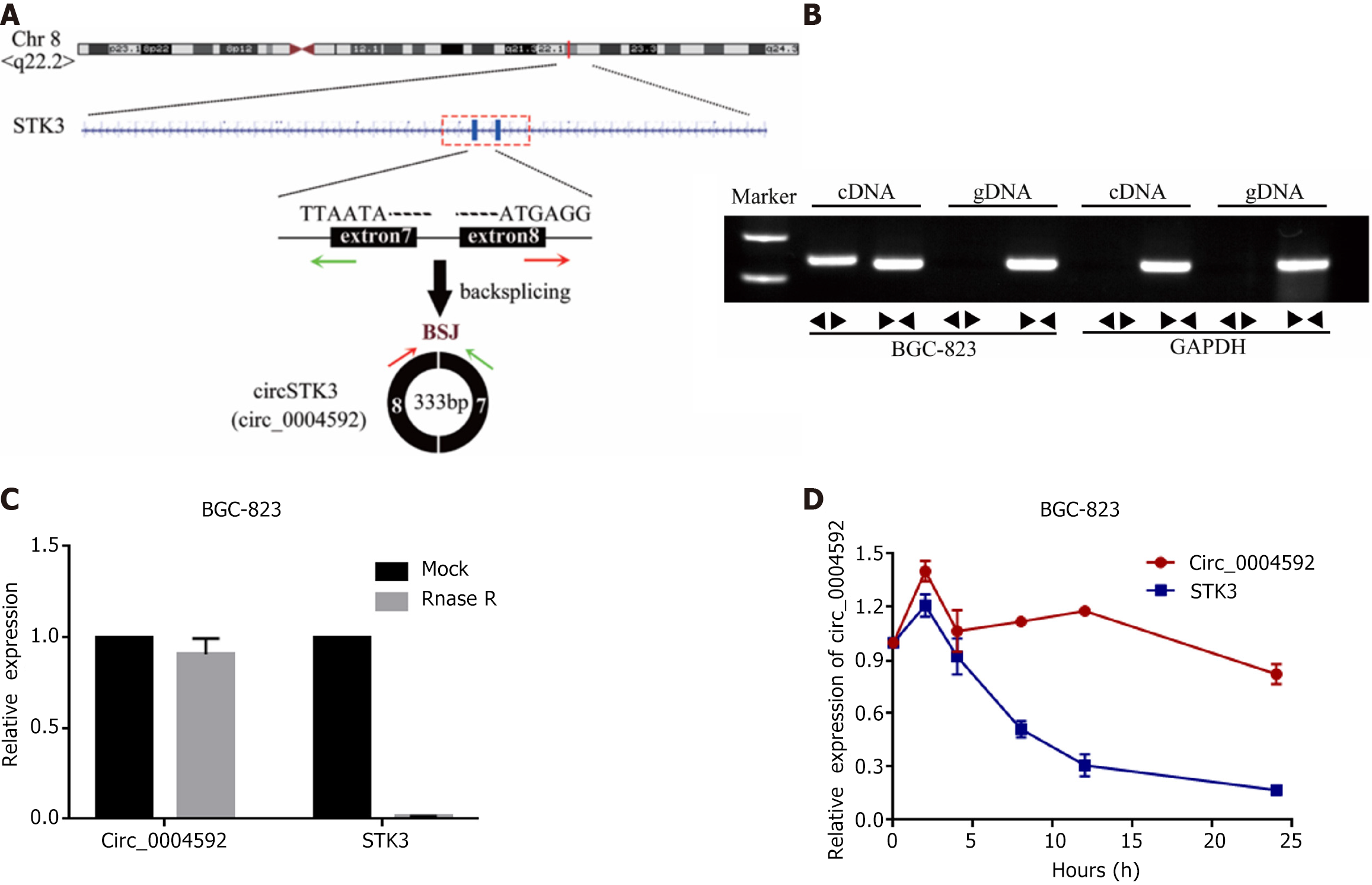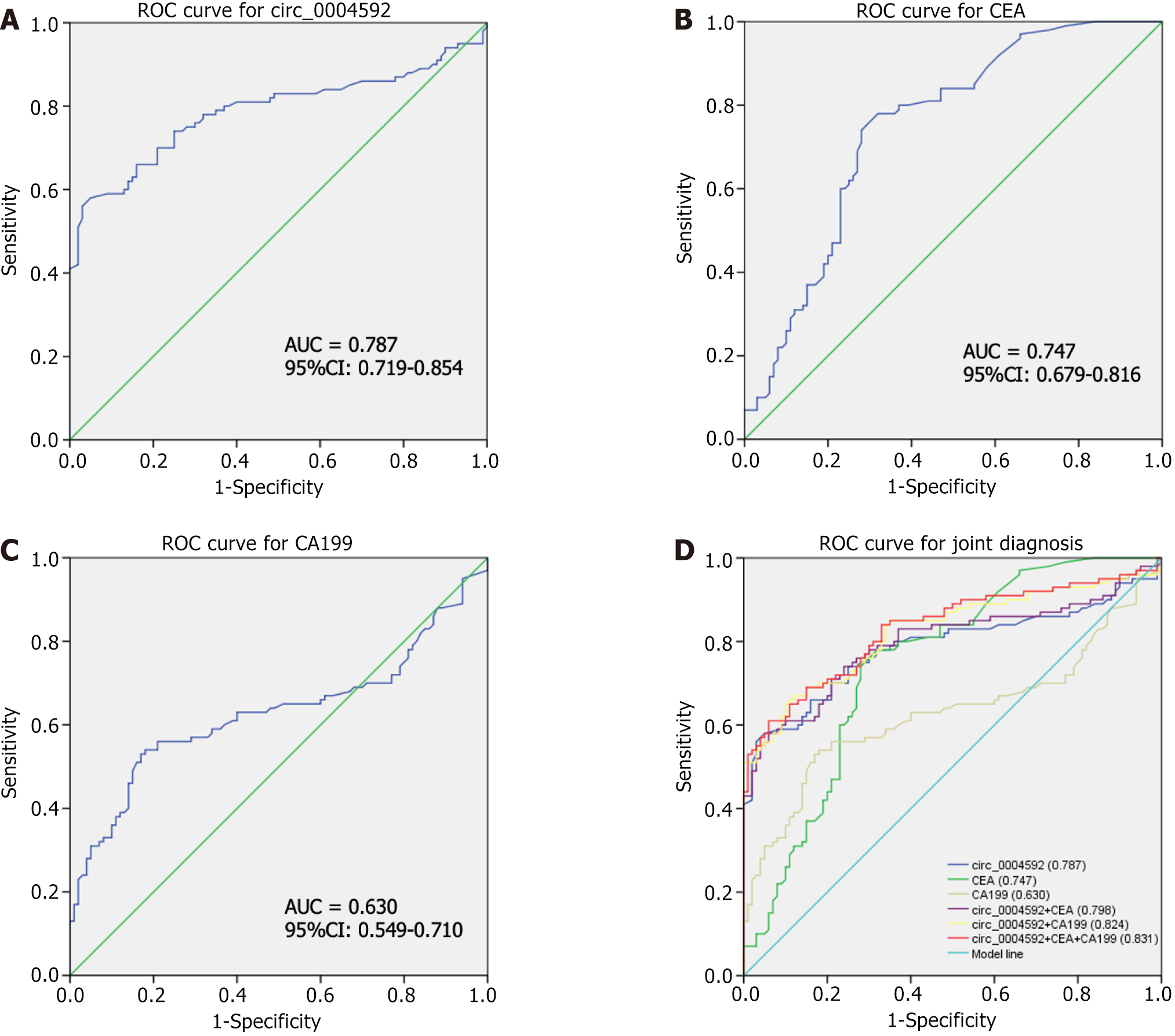Copyright
©The Author(s) 2024.
World J Gastrointest Oncol. Jun 15, 2024; 16(6): 2757-2768
Published online Jun 15, 2024. doi: 10.4251/wjgo.v16.i6.2757
Published online Jun 15, 2024. doi: 10.4251/wjgo.v16.i6.2757
Figure 1 The expression profile of circular RNA.
A: Hierarchical clustering results of circular RNA (circRNA) expression profiles between the gastric cancer (GC) tissues and matched normal tissues (the three columns in blue represent the case group, representing the cancer tissue specimens of three GC patients, and the three columns in pink represent the control group, representing the para-cancer tissue specimens matched by the cancer tissues of three GC patients. Each grid represents each gene, and the color indicates up-regulated/down-regulated expression of that gene, with red indicating up-regulated expression and green indicating down-regulated expression); B: Volcano plot of circRNA expression profile; C: The expression level of circ_0004592 in GC cell lines (BGC-823, MGC-803, MKN-45, MKN-1, SGC-7901, and HGC-27); D: The expression level of circ_0004592 in GC tissues (n = 20); E: The expression level of circ_0004592 in GC patients (n = 10). aP < 0.05; bP < 0.01.
Figure 2 Verification of circ_0004592 expression.
A and B: Stability of plasma circ_0004592 at room temperature and under repeated freeze-thaw conditions; C: The melting curve of circ_0004592 is unimodal; D: Polymerase chain reaction product detected by AGE analysis; E: The cyclization site of circ_0004592 verified by Sanger sequencing.
Figure 3 Features of circ_0004592.
A: Schematic illustration of the circ_0004592 formation from STK3 gene in the chromosome 8; B: The existence of circ_0004592 was confirmed by real-time fluorescent quantitative polymerase chain reaction (RT-PCR) and AGE using convergent and divergent primers. Circ_0004592 can only be amplified in cDNA. GAPDH serves as control; C: Stability of circ_0004592 and linear STK3 was assessed by RNase treatment followed by quantitative RT-PCR (qRT-PCR); D: Stability of circ_0004592 and linear STK3 was assessed by Actinomycin D treatment followed by qRT-PCR at different time points.
Figure 4 Dynamic changes in the expression level of plasma circ_0004592 during the progression of gastric cancer.
A: Detection of plasma circ_0004592 in gastric cancer (GC) patients (n = 100), benign lesions (n = 15), precancerous lesions (n = 15) and healthy donors (n = 100); B: Detection of carcinoembryonic antigen levels; C: Detection of cancer antigen 199 levels; D: The level of plasma circ_0004592 in GC patients decreased after operation. GC: Gastric cancer; NS: Not significant.
Figure 5 The diagnostic utility of plasma circ_0004592 in gastric cancer patients.
A: Evaluation of diagnostic efficiency of circ_0004592 in differentiating gastric cancer (GC) patients from healthy donors; B: Evaluation of diagnostic efficiency of carcinoembryonic antigen (CEA) in differentiating GC patients from healthy donors; C: Evaluation of diagnostic efficiency of CEA in differentiating GC patients from healthy donors; D: The combined diagnosis of circ_0004592, CEA and cancer antigen 199 in discriminating GC patients from healthy donors. ROC: Receiver operating characteristic; CEA: Carcinoembryonic antigen; CA199: Cancer antigen 199; AUC: Area under the curve; 95%CI: 95% confidence interval.
- Citation: Kong S, Xu YH, Zheng M, Ju SQ, Shi HC. Circ_0004592: An auxiliary diagnostic biomarker for gastric cancer. World J Gastrointest Oncol 2024; 16(6): 2757-2768
- URL: https://www.wjgnet.com/1948-5204/full/v16/i6/2757.htm
- DOI: https://dx.doi.org/10.4251/wjgo.v16.i6.2757













